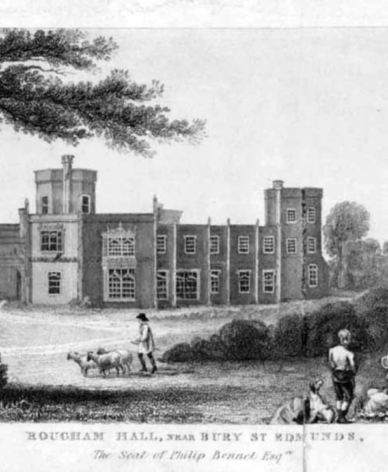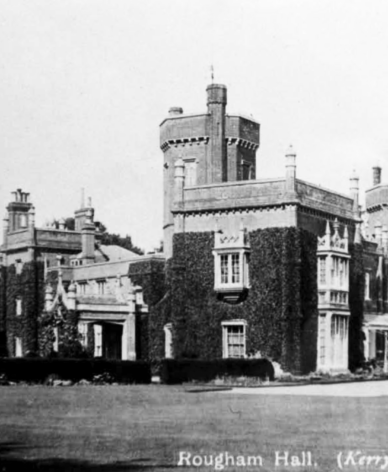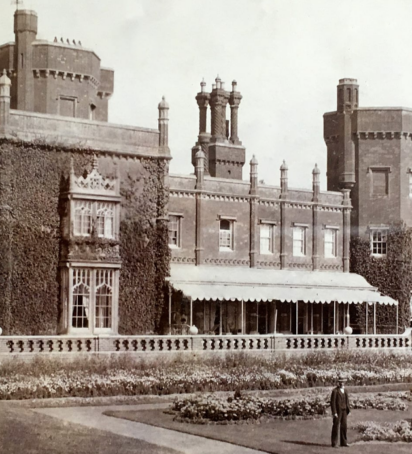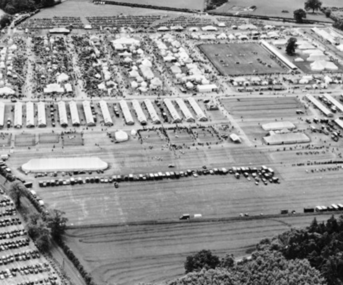Rougham Manor
Rougham Manor, an estate with roots dating back to Roman times, belonged to a powerful Saxon noble before being bequeathed to Bury St Edmunds Abbey in the late 10th century.

Split in two
After the dissolution of the monasteries, the Drury family acquired the manor. With the Drury male line ending in 1634, the Estate was passed to the Wells family and was split into two.
Rougham Place was sold to Sir Jeffrey Burwell in 1645 and by 1674 it had become a substantial house with twenty hearths. In the 1680s, it was sold to Sir Robert Davers who had recently returned from Barbados with a fortune from sugar plantations.
Rougham Old Hall, the half retained by the Wells family, was sold to Roger Kerington in 1668. The estate passed through marriages and inheritances to Revd Roger Kedington in 1776.
This Roger, with a complex marital history and lukewarm commitment to the church, enlarged Rougham Estate and in 1815 purchased Rougham Place, reuniting the two parts again. Upon his death in 1818, the Estate passed to his one legitimate daughter, Jane Judith.

Building the new hall
Jane Judith and her husband Philip Bennet enlisted architect Thomas Hopper in 1821 to build a new mansion, the Tudor Gothic-style Rougham Hall. The Old Hall, south of the A14, was probably demolished in the late 1800s.
Four generations of Philip Bennet resided at the New Hall, but in 1893, Philip sold Rougham Hall to Edwin James Johnstone. Marion Ada Yeo, Johnstone’s wife, made substantial additions, including aviaries, gardens and utility upgrades.
Financial troubles in 1904 led to the Estate’s sale to George William Agnew.

1904-1940 The Agnews
George William Agnew promptly enlarged Rougham Hall to accommodate his seven children, making subsequent alterations and additions. During World War II, an arms dump was located in the park of Rougham Hall.
In a 1940 bombing, possibly attracted by the troops based here, a wing of the house vanished, but miraculously, no one was hurt. Life at the hall came to an abrupt halt, an auction ensued, and the hall, exposed to the elements, remains a ruin today.
Please Note
Rougham Hall remains a ruin and is NOT open to the public.
Anyone found trespassing at the hall site will have their details taken and be required to leave immediately.
The ONLY way to visit the Hall is by attending one of the Guided Walks to the Hall.







